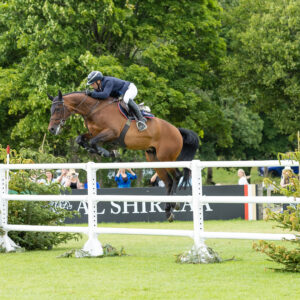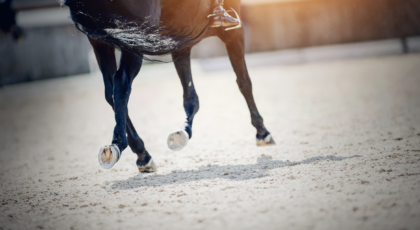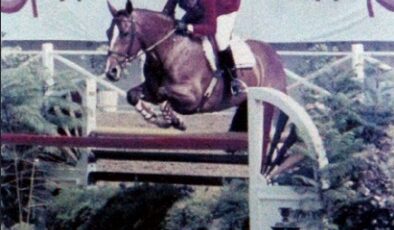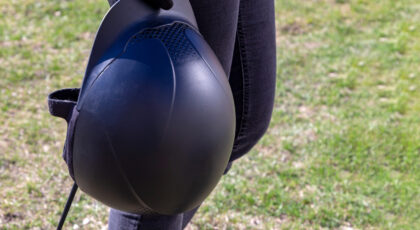#MasterclassMonday is a collaboration between Horse Network and NOELLEFLOYD.com to empower equestrians. Every Monday we’ll bring you a new lesson from a leading trainer to help you troubleshoot your training, master your mindset and up your game. This month’s featured rider: Ian Millar.
Let’s consider what feel is, and how it actually works.
The horse’s brain connects to the horse’s mouth, the horse’s mouth connects to the rider’s hand, and the rider’s hand connects to the rider’s brain. So there is your connection. Brain to brain can only be as good as the horse’s mouth to the rider’s hand.
We also create a body-to-body connection through our legs, seat, and balance. The way that we observe our horse and respond accordingly by using our body in specific ways in a split second to influence the horse’s behavior is the foundation of feel. This connection and responsiveness is a learned skill that can be developed through purposeful practice and trial and error, until you begin to naturally respond in a way that influences your horse in the way you want and does so in an in-the-moment, subtle way that makes it look like you’re not doing anything at all.
Want more? Check out Ian Millar’s Masterclass “Riding with Body Control & Feel”
Now let’s apply this concept of connection to a halt transition.
A walk-to-halt transition is a great, low-stakes way to practice your observation, response, and body control skills. In this example, a looped rein is “zero degrees” and as hard as you can apply pressure on the reins is “10 degrees.”
Start by walking on your horse and ask for a halt in the way you normally would. If you have a base of contact on the horse’s mouth of two degrees and when the big moment comes, you use your fingers and your elbow and jump right to six degrees pressure, you’re likely to get a big reaction from your horse. Your horse may flip their head and come to a grinding halt. You can tell by their body language that they’re vaguely insulted by the whole thing. Maybe their body feels tense and agitated underneath you. May you notice a tension through their neck, or maybe their mouth is open.
I want you to think about the reaction you got from your horse. Learn to listen to that.
The next time you try for a halt let’s go from two degrees maybe up to three, three and a half degrees. You’ll likely get a much nicer reaction, but perhaps you still get a little resistance in the mouth, so you give the horse a minute to relax and then you try it again.
This time you go from two degrees to only two and a half degrees. Nothing happens. So now you very smoothly go up to three degrees. Boom, you get the efficient but pleasant halt. Your horse is happy and relaxed but listening to your aids. No flip of the head.
This is a successful experience all around.
This is the beginning of feel—you’re starting to observe exactly what your horse needs from you at this moment to obtain the desired behavior in a way that doesn’t create excess energy or agitation but is also effective and efficient.
At this point, you think to yourself, OK, going forward, if I have this exact same circumstance in place, all I need is three degrees of pressure quietly applied to get this halt. If you practice that long enough, pretty soon the ability to gauge the amount of pressure that you need in your walk-to-halt transitions will become subconscious.
Now, somebody watching your beautiful walk-to-halt transitions might say, “My gosh, look at the feel of that rider!” Yes, by then, there is a certain amount of feel to it. But really, it was learned through trial and error, and by being dedicated to learning and practicing.
Once you can do this at the halt, you can then apply the same method to the trot to the walk, the canter to the trot, the half halt, etc. Any communication you want to have with that horse’s mouth and body can be applied that way because you have learned exactly the right amount of pressure to get the right result under a certain given set of circumstances. The more you practice and observe, the more feel you will develop.
This is an excerpt from Ian Millar’s new Equestrian Masterclass on body control and feel. To access the course, as well as a full library of courses from the likes of Anne Kursinski, Martin Fuchs and more, go to equestrianmasterclass.com


 May 30, 2022
May 30, 2022 

























